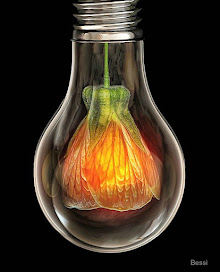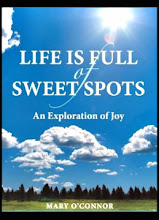
Those of you who read
Glass Petal Smoke regularly may have noticed Karin Berg's name in the dedication on the bottom of the page. Karin Berg was a personal friend who was born on January 5, 1936 and passed away on October 26, 2006. Her spirit has interesting ways of showing up in my life, especially on her birthday.
I just finished writing a letter to fellow blogger Caitlin Shortell, editor of
Legerdenez, when Karin's memory bubbled up. After I finished the note I remembered it was Karin's birthday. The first online article I wrote appeared in the January 5, 2007 edition of
Bois de Jasmin. The timing wasn't planned, but it was one of many synchronous things that happened on that day. I don't question this kind of "coincidence". There are some things in life that don't need explanation or proof, times when it's best to savor the flavor of mystery.
Though you may not have known Karin, you probably listened to many of the bands she signed to major record labels like Warner Brothers. I remember REM's first gig at Madison Square Garden because Karin invited me to join her (she signed them after they spent their indie years on IRS Records). There was a party after the show and I wound up cavorting with musicians and drinking beer with the B-52s in a Mexican bar in Tribeca. The list of talent Karin Berg recruited is miles long. Reading about her memorial service in
The Villager gives you an idea of how many lives (and music collections) she touched.
Food was a big part of our friendship. I baked cookies for Karin regularly and she was hooked on Chocolate Voodoo Love, a spice cookie I invented that uses ingredients common to perfumery. This prompted a serious discussion that included the possibility of sending me to The French Culinary Institute for a degree in pastry arts (although I declined). Towards the end of her life Karin suffered from
myositis, a degenerative disease with no known cure. As the disease progressed she found it hard for to breathe and needed the assistance of a portable oxygen tank. Hot and humid days were extremely difficult for her, but she refused to stop enjoying life. We had lunch at
Fleur de Sel one summer, oxygen tank in tow. One of the fondest food memories I have was enjoying lobster roll with Karin at
Mary's Fish Camp. I've managed to lure many colleagues in the fragrance industry to 64 Charles Street for a mouthwatering taste of lobster salad on a roll served a side of shoestring fries dusted in
Old Bay Seasoning. The summer before she died, Karin and I ate our last meal together at her kitchen table; hamburgers and French fries delivered from
Florent.
Karin was known for having stellar taste and when it came to perfume Chanel's
Cuir de Russie was her holy grail. Though she no longer used fine fragrance (strong scents affected her breathing) she spoke about
Cuir de Russie with intense relish. I was motivated to seek out the perfume and was immediately smitten with the scent. Karin was a catalyst in my life, in more ways than I can begin to describe. Though she could be rigorous and challenging at times, she had a way of bringing out the best in you. Perhaps it was this very quality that endeared her to the musicians whose talents she nurtured. In honor of her birthday I'd like to share a poem I wrote back in 2004. It would have stayed hidden in my computer, but there is something about today that is compelling me to release it. Happy birthday, Karin.
Shades of Araby
did you feel the wind
sliding at your heels,
tracing the sunlight
that fell on your ankles,
where the asphalt
meets the curb
and the river
respires?
were you lifted
by mingling tiger lilies
and honeysuckle,
beckoning between
bush and bramble,
separating your lips
and sharing your breath?
is it the hudson or araby
that sends us levitating
above pools of
human heartache
and suffering?
what is it
about the water and light
that completes us,
why here?
cipher like a tattoo,
ink sinking
deep into bones,
entwining proximities
until there is no distance
between us.
a single kiss
parts the veil between worlds,
releasing desire
in a sea of dandelion seeds
that whirl softly above the river,
they meet the yielding earth
on the shores of the palisades,
finally home.
Notes:
Salamander painting by Ian Daniels. The artist's prints are available at
Duirwaigh.
 If you're of the gormandizing ilk there's an event at the New School that should be on your radar. It costs less than a movie and is guaranteed to enlighten your mind as well as your palate.
If you're of the gormandizing ilk there's an event at the New School that should be on your radar. It costs less than a movie and is guaranteed to enlighten your mind as well as your palate.



,_La_figlia_di_Iorio_%281914%29.jpg)








